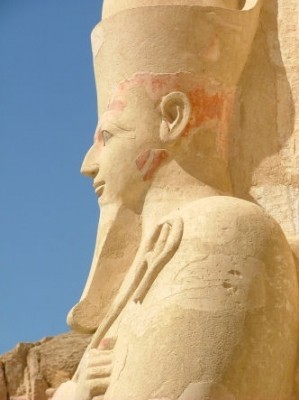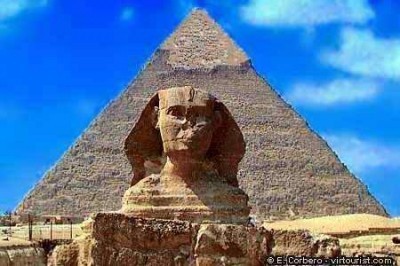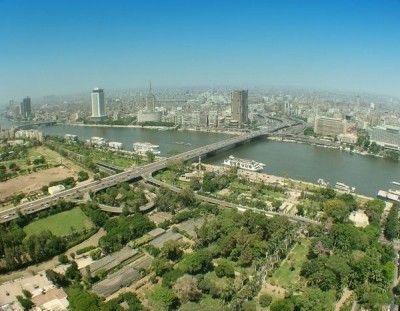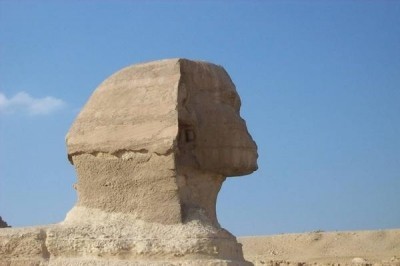Package includes:
- ✓Accommodation in hotels on HB basis
- ✓Licensed Guide
- ✓Program as in the below.
- ✓Transportation with an AC touristic Coach
- ✓Nufar well come kit
- ✓Entrance Fees
Package does not include:
- –International Flight
- –Personal Health Insurance
- –Tips to service provides
- –Entry Visa
Egypt - 9 days tour
-
Day 1 : Cairo
You will arrive to the land of the pharos, Upon arrival Cairo international airport you will be welcomed by our representative who will assist you with the immigration formalities to make sure that every thing is going smooth and easy then you will be transferred to your hotel with our air conditioned comfortable buses to have dinner and overnight at your hotel , on the way our representative will give you all the information you need about Cairo and about your itinerary in Egypt.
-
Day 2 : Cairo - Giza Pyramids
Start a guided tour to visit the Giza Pyramids Today there are more than 93 Pyramids in Egypt; but the three main Pyramids are in Giza Plateau , which were built in the 4th Dynasty (circa 4650 B.C). The Pyramids of Ancient Egypt were built as tombs for Kings (and Queens), and it was the exclusive privilege to have a Pyramid tomb. the most famous ones are those at Giza , The Great Sphinx, or as the ancients knew it, “Shesib Ankh” or “the living image”, has to be one of the most recognisable constructions in history.
Stop by a Papyrus institute where can find how the ancient Egyptians used the papyrus for writing and can buy some souvenirs for your friends
After lunch, will continue our tour to the Egyptian Museum The Egyptian Museum of Antiquities (built in 1902) is home to an extensive collection of ancient Egyptian antiquities. It has 120,000 items, with a representative amount on display, the museum contains many important pieces of ancient Egyptian history. It houses the world’s largest collection of Pharaonic antiquities, and many treasures of King Tutankhamen. the remainder in storerooms.
Stop for having tea at a Perfume factory where scents made from lotus flower, papyrus or jasmine oil. These fine perfumes need equally fine glass bottles.
Will end our tour by free time for shopping at Khan Khalili Bazaar , the largest Bazaar in Middle East this Market is famous for its unusual, typical oriental souvenirs and handmade crafts. Medieval atmosphere of this traditional market gives visitors great pleasure and glimpse into what medieval markets were like: Cafes, restaurants, shops
Then you will be transferred to railway station to board the sleeper train to Aswan for overnight journey (12-13 hours ) – shower facilities not available ..
Dinner and overnight at hotel
-
Day 3: Aswan - High Dam
Breakfast will be served on board
Upon arrival visit the High Dam. Construction of the High Dam became a key objective of the Egyptian Government following the Egyptian Revolution of 1952, as the ability to control floods, provide water for irrigation, and generate hydroelectricity were seen as pivotal to Egypt’s industrialization. The High Dam was constructed between 1960 and 1970, and has had a significant impact on the economy and culture of Egypt.
Proceed to visit the unfinished obelisk is the largest known ancient obelisk and is located in the northern region of the stone quarries of ancient Egypt in Aswan Egypt. Archaeologists claim the pharaoh known as Hatshepsut sanctioned its construction. It is nearly one third larger than any ancient Egyptian obelisk ever erected. If finished it would have measured around 42 m (approximately 137 feet) and would have weighed nearly 1,200 tons. Archeologists speculate that it was intended to complement the so-called Lateran Obelisk which was originally at Karnak and is now outside the Lateran Palace in Rome., Embark your 5* cruise ship , lunch and get some rest before riding a traditional Egyptian sailing boat on the river Nile and view the Mausoleum of Agha Khan and sail around elephantine Island
Return to the cruise ship , dinner and overnight
-
Day 4: Kom Omdo - Edfu
Having your breakfast during 2-2.5 hours sailing to Kom Ombo (north of Aswan city) Visit Temple of Kom Ombo, an unusual double temple built during the Ptolemaic dynasty in the Egyptian town of Kom Ombo. Some additions to it were later made during the Roman period. The building is unique because its ‘double’ design meant that there were courts, halls, sanctuaries and rooms duplicated for two sets of gods.
Sailing to Edfu, and after lunch visit the temple of Horus in Edfu using the horse carriages (Egyptian Cadillac)
Visit Temple of Horus, an ancient Egyptian temple located on the west bank of the Nile in the city of Edfu which was known in Greco-Roman times as Apollonopolis Magna, after the chief god Horus-Apollo. It is one of the best preserved temples in Egypt. The temple, dedicated to the falcon god Horus, was built in the Ptolemaic period between 237 and 57 BC.
Sailing to Luxor
-
Day 5: Luxor - Kings Vally
After breakfast , drive to the west bank of the Nile and visit The Valley of the Kings where, for a period of nearly 500 years from the 16th to 11th century BC, tombs were constructed for the Pharaohs and powerful nobles of the New Kingdom (the Eighteenth to the Twentieth Dynasties of Ancient Egypt). The valley stands on the west bank of the Nile, opposite Thebes (modern Luxor), within the heart of the Theban Necropolis. The valley consists of two valleys, East Valley (where the majority of the royal tombs are situated) and West Valley.
With the 2005 discovery of a new chamber (KV63), and the 2008 discovery of two further tomb entrances, the valley is known to contain 63 tombs and chambers
Continue the visit to the Hatshepsut (Dayr el-Bahri) , literally meaning, “The Northern Monastery” is a complex of mortuary temples and tombs located on the west bank of the Nile, opposite the city of Luxor, Egypt. This is a part of the Theban Necropolis. The first monument built at the site was the mortuary temple of Mentuhotep II of the Eleventh dynasty. It was constructed during the 15th century BC.
During the Eighteenth dynasty, Amenhotep I and Hatshepsut also built extensively at the site.
Photo stop by the colossi of Memnon before returning to the cruise ship and rest of the day at leisure
-
Day 6: Luxor Temple
After breakfast ,disembarkation , visit the Karnak temple which comprises a vast mix of decayed temples, chapels, pylons, and other buildings. Building at the complex began during the reign of Senusret I in the Middle Kingdom and continued into the Ptolemaic period, although most of the extant buildings date from the New Kingdom. . The Karnak complex gives its name to the nearby, and partly surrounded, modern village of El-Karnak, 2.5 kilometers (1.6 miles) north of Luxor.
Proceed to Luxor Temple which s a large Ancient Egyptian temple complex located on the east bank of the Nile River in the city today known asLuxor (ancient Thebes) and was founded in 1400 BCE. Known in the Egyptian language as ipet resyt, or “the southern sanctuary.” In Luxor there are six great temples, the four on the left bank are known to travelers and readers of travels as Goornah, Deir-el-Bahri, the Ramesseum, and Medinet Habu; and the two temples on the right bank are known as the Karnak and Luxor.
Free time for shopping before transfer to railway station to board the sleeper train to Cairo (10 hours)
-
Day 7: Citadel of Saladin - Mohamed Ali Mosque
Breakfast on board the train , arrival Cairo and start our tour visiting the Citadel of Saladin & Mohamed Ali Mosque
The Citadel is a medieval Islamic fortification. The location, on Mokattam hill near the center of Cairo, was once famous for its fresh breeze and grand views of the city. It is now a preserved historic site, with mosques and museums.
The Citadel contains the Mosque of Muhammad Ali which was built between 1828 and 1848, perched on the summit of the citadel.
This mosque was built in memory of Tusun Pasha, Muhammad Ali’s second son who died in 1816. However, it also represents Muhammad Ali’s efforts to erase symbols of the Mamluk dynasty that he replaced.
After the tour transfer to your hotel , dinner and overnight
-
Day 8: Alexandria - Cairo
After breakfast , will drive to the north of Cairo towards Alexandria (220 KM)
Alexandria is the second largest city and the second largest metropolitan area in Egypt after Greater Cairo by size and population, extending about 32 km along the coast of the Mediterranean Sea in the north central part of the country Alexandria was founded around a small Ancient Egyptian town c. 331 BC by Alexander the Great. It became an important center of the Hellenistic civilization and remained the capital of Hellenistic and Roman & Byzantine Egypt for almost 1000 years until the Muslim conquest of Egypt in AD 641
Start the tour visiting the Fort of Qaitbay , is a 15th-century defensive fortress located on the Mediterranean sea coast, and was established in 1477 AD by Sultan Al-Ashraf Sayf al-Din Qa’it Bay. The Citadel is situated on the eastern side of the northern tip of Pharos Island at the mouth of the Eastern Harbor
Proceed to the Mosque of El-Mursi Abul-Abbas Mosque The mosque is dedicated to the 13th century Alexandrine Sufi saint el-Mursi Abul Abbas whose tomb it contains. It is located in the Anfoushi neighborhood of Alexandria, near the Citadel of Qaitbay.The Mosque was redesigned and built in today’s current form by Eugenio Valzania and Mario Rossi in the years 1929/1945.
After lunch drive to Montazah Gardens that surrounds the Montaza Palace the summer residence of late king Farouk . It was built on a low plateau east of central Alexandria overlooking a beach on the Mediterranean Sea.
-
Day 9: Departure
After breakfast , you will be transferred to Cairo airport for final departure



